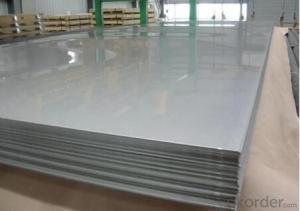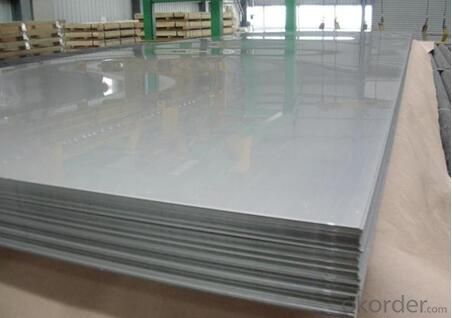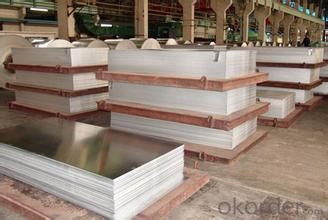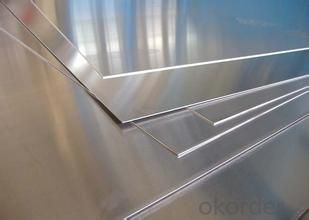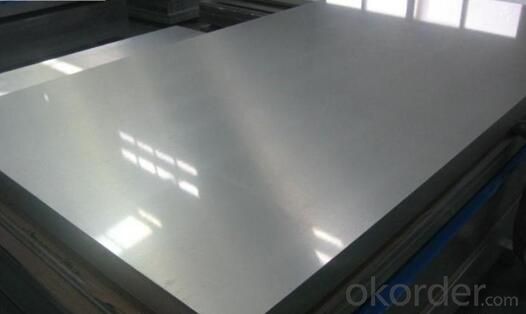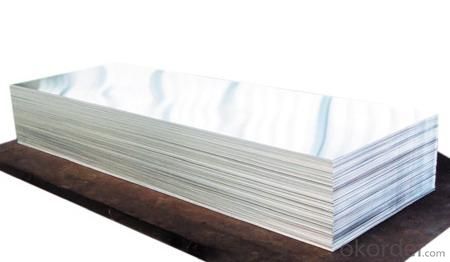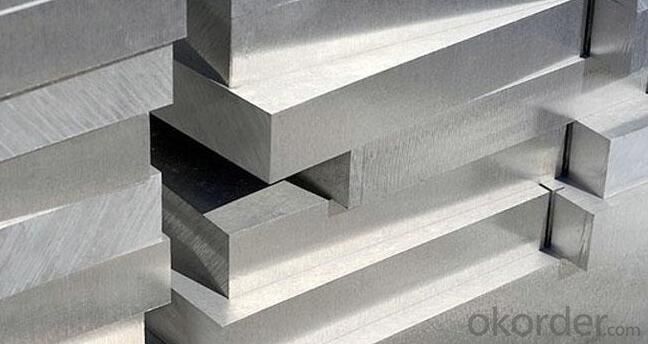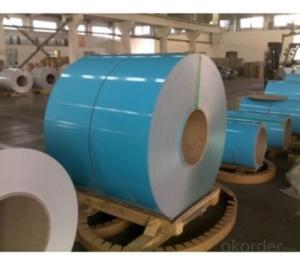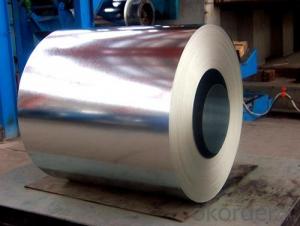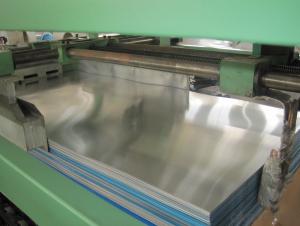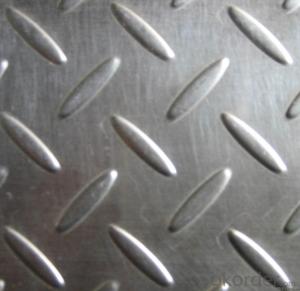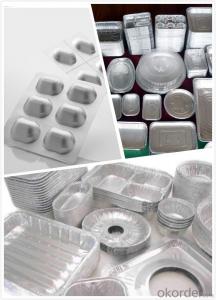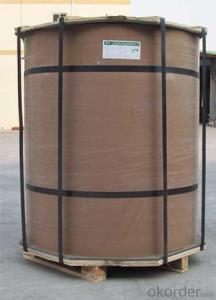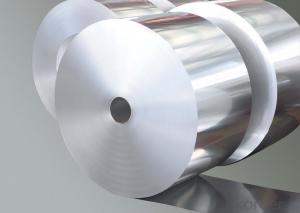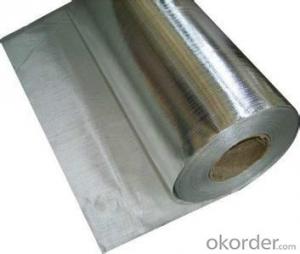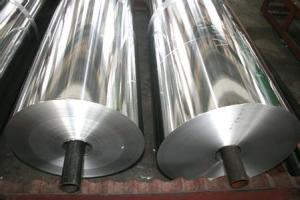Large Deep-Drawing Coated Aluminum Foil Sheets
- Loading Port:
- Shanghai
- Payment Terms:
- TT OR LC
- Min Order Qty:
- 8 m.t.
- Supply Capability:
- 20000 m.t./month
OKorder Service Pledge
OKorder Financial Service
You Might Also Like
Specification
1.General Information
Aluminum sheets is between 0.1 mm and 500mm in thickness and has a wide variety of uses in the construction industry including aluminium siding and roofing. Sheet is also used widely in construction, decoration, transport applications and other various industrial filed, such as automobile body panels, airframes, curtain walls and the hulls of boats etc.
We produces aluminum sheets which meets the highest standards in its own mill while save the cost. Our strong quality control term bring you the most-qualified products. Our aluminum complying with YS/T 429-2000(Chinese Industry Standard),GB/T 3880,EN485,ASTM B209.
The main producing procedure includes the following steps:
Rolling--Annealing--Slitting--Sawing, Cut-To-Length, Shearing
2. Technical Data
Alloy
AA1050,AA1060, AA1070, AA1100
Temper:
H12, H14, H16, H18, H22, H24, H26, H32,HO, F
Thickness:
0.10-500mm
strict chemical composition , good hardness high safety performance
Oxide film thickness, corrosion resistance
Standard aluminum closed time, no rust
smooth surface, no burrs
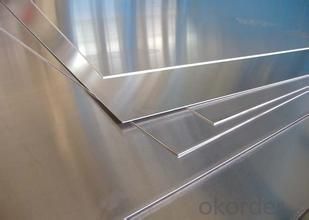
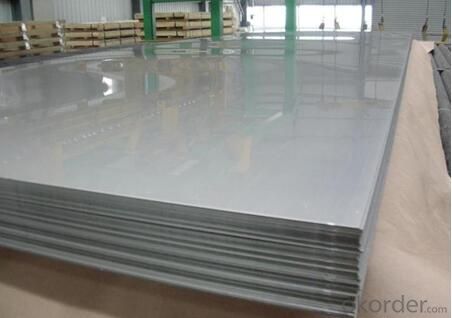
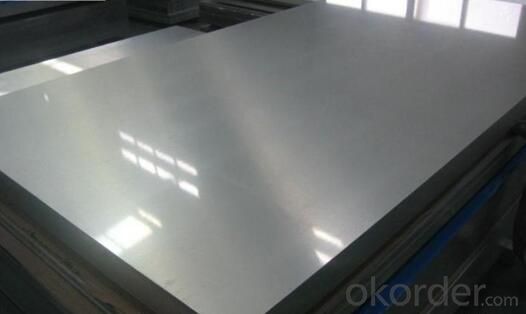
- Q: This question asks for signs or methods to identify if a building is utilizing aluminum sheets in its construction or design.
- <p>To determine if a building is using aluminum sheets, look for the following signs: 1) Shiny, metallic appearance, which is characteristic of aluminum. 2) Lightweight construction, as aluminum is less dense than many other metals. 3) Resistance to corrosion and weathering, a common feature of aluminum. 4) Use in areas prone to water or moisture, as aluminum is water-resistant. 5) Check for the manufacturer's specifications or building materials list. If possible, consult with the building's architect or engineer for confirmation.</p>
- Q: How do aluminum sheets perform in terms of fire resistance?
- Aluminum sheets possess outstanding fire resistance characteristics. This material, aluminum, is non-combustible, meaning it does not burn or contribute to the propagation of fire. In fact, aluminum has a remarkably high melting point of approximately 660 degrees Celsius (1220 degrees Fahrenheit), rendering it highly resistant to heat. When subjected to fire, aluminum generates a thin layer of oxide on its surface, creating a protective barrier that hinders further oxidation. This oxide layer is highly stable and effectively prevents the material from igniting or emitting flammable gases. Moreover, aluminum sheets exhibit low thermal conductivity, which reduces the ease with which they transfer heat compared to other metals. This property further enhances their fire resistance. These fire-resistant attributes position aluminum sheets as a preferred choice in a wide range of applications where fire safety is a primary concern, including building construction, aerospace industry, automotive manufacturing, and electrical enclosures. Aluminum sheets are commonly utilized in exterior cladding, roofing, and insulation systems, providing an additional layer of safeguard against fire hazards. It is essential to acknowledge that while aluminum sheets themselves possess high fire resistance, the overall fire performance of a structure or system relies on factors such as design, installation, and the use of other materials in conjunction with aluminum sheets. Therefore, it is vital to adhere to appropriate fire safety regulations and guidelines to ensure optimal fire resistance in any given application.
- Q: How is the strength and durability of aluminum sheets determined?
- The strength and durability of aluminum sheets are determined through a variety of testing methods and parameters. One of the primary factors that determines the strength of aluminum sheets is the alloy composition. Different alloy compositions have varying levels of strength, and certain elements added to the aluminum can enhance its strength properties. To evaluate the strength of aluminum sheets, tensile testing is commonly employed. This involves subjecting a sample of the sheet to tension until it fractures. During the test, the load and deformation are measured, and the ultimate tensile strength (UTS) and yield strength are determined. UTS represents the maximum stress the sheet can withstand before failure, while yield strength is the stress at which the material begins to deform plastically. Another important consideration for determining the strength and durability of aluminum sheets is the thickness. Generally, thicker sheets tend to be stronger and more durable than thinner ones due to the increased cross-sectional area contributing to load-bearing capacity. In addition to alloy composition and thickness, the manufacturing process also affects the strength and durability of aluminum sheets. Factors such as rolling and heat treatment can alter the microstructure of the aluminum, influencing its mechanical properties. Proper control of these processes helps ensure consistent strength and durability across the sheets. Furthermore, aluminum sheets are often evaluated for their resistance to corrosion. Aluminum naturally forms a protective oxide layer, which contributes to its corrosion resistance. However, specific coatings or treatments can be applied to enhance this resistance, depending on the intended application. In summary, the strength and durability of aluminum sheets are determined through a combination of alloy composition, thickness, manufacturing processes, and testing methods such as tensile testing. These factors collectively dictate the mechanical properties and resistance of aluminum sheets to various forms of stress, making them suitable for a wide range of applications.
- Q: This question asks for a comparison between aluminum sheets and other roofing materials, highlighting their differences.
- <p>Aluminum sheets differ from other roofing materials such as asphalt shingles, clay tiles, and metal roofs in several ways. They are lightweight, durable, and resistant to corrosion, making them ideal for coastal areas. Aluminum sheets offer a sleek, modern aesthetic and can be easily recycled, contributing to their environmental friendliness. Unlike asphalt shingles, which have a shorter lifespan, aluminum sheets are long-lasting and can withstand extreme weather conditions. They also don't require the same level of maintenance as clay tiles, which can crack over time. While metal roofs can be similar to aluminum in terms of durability, aluminum sheets are typically more cost-effective and offer a wider range of colors and finishes.</p>
- Q: This question asks about the various applications of aluminum sheets within the construction industry.
- <p>Aluminum sheets are widely used in construction for their durability, lightweight, and resistance to corrosion. They are commonly used for roofing and cladding due to their ability to withstand harsh weather conditions. Aluminum sheets are also used in the manufacturing of window frames and doors because of their strength and thermal insulation properties. Additionally, they are utilized in the construction of scaffolding and temporary structures due to their ease of assembly and disassembly. In interior design, aluminum sheets can be used for decorative purposes, such as wall panels and ceilings. Their recyclability also makes them an environmentally friendly choice for construction projects.</p>
- Q: The user is asking if aluminum sheets can be used as a substitute for metal siding in construction.
- <p>Yes, aluminum sheets can be used to replace metal siding. They are lightweight, durable, and resistant to corrosion, making them a popular choice for siding. Aluminum sheets can be painted or finished to match various architectural styles and are low maintenance. However, it's important to ensure that the aluminum sheets are of the appropriate gauge and quality for the application, and that they are installed correctly to ensure longevity and performance.</p>
- Q: Can aluminum sheets be used for signage purposes?
- Yes, aluminum sheets can be used for signage purposes. Aluminum is a versatile and durable material that is commonly used in the signage industry. It is lightweight, corrosion-resistant, and has excellent weather resistance, making it suitable for both indoor and outdoor signage. Aluminum sheets can be easily cut and shaped to create various sizes and designs of signs. They can be painted, coated, or printed on to display logos, text, or graphics. Additionally, aluminum signs are cost-effective and have a long lifespan, making them a popular choice for businesses, construction sites, road signs, and other signage applications.
- Q: Hello, I dont really know anything about using a drill or cutting through metal or wood. the thing is I have a project in which I have to drill some holes in 0.04in aluminum. but I really dont know if can use regular drill bits used for drilling wood to drill the holes in my aluminum chassis. do I need to buy other drill bits for cutting metal or can I use the same ones Ive seen used for cutting wood? can I even use the same kind of drills, or do I NEED a huge bench drill with stepper bits?thanks
- Aluminum is softer than steel, so you could just use the ordinary bits that you use for wood, with a hand drill. For cleaner holes, you might want to put wood behind the aluminum as a backing. Also, if you squirt a drop of oil onto the drill area, that will help. If you're trying to drill a really large hole, it might be better to drill small ones, and enlarge with a round file.
- Q: Can aluminum sheet be anodized?
- Yes, aluminum sheet can be anodized. Anodizing is an electrochemical process that enhances the natural oxide layer on the surface of aluminum, making it thicker, more durable, and better suited for various applications. The process involves immersing the aluminum sheet into an electrolyte solution and passing an electric current through it. This causes oxygen ions to be released from the electrolyte and bond with the aluminum, forming a new layer of aluminum oxide. Anodizing can be used to create a range of colors on the surface of the aluminum sheet, as well as improve its corrosion resistance and provide a better surface for adhesion of paints or coatings.
- Q: How is the thickness of aluminum sheets measured?
- A micrometer is typically utilized to measure the thickness of aluminum sheets. This precision instrument consists of a calibrated screw mechanism featuring a spindle and anvil. To determine the thickness of an aluminum sheet, it is positioned between the spindle and anvil of the micrometer. By turning the screw, pressure is applied to firmly secure the sheet in place. The measurement can then be obtained by reading the scale or digital display on the micrometer. Alternatively, a thickness gauge is commonly employed for this purpose. This gauge employs a set of parallel anvils to measure the sheet's thickness. The sheet is inserted into the gap between the anvils, and the measurement can be obtained by reading the scale or display on the gauge. Both methods yield precise and dependable measurements of aluminum sheet thickness.
Send your message to us
Large Deep-Drawing Coated Aluminum Foil Sheets
- Loading Port:
- Shanghai
- Payment Terms:
- TT OR LC
- Min Order Qty:
- 8 m.t.
- Supply Capability:
- 20000 m.t./month
OKorder Service Pledge
OKorder Financial Service
Similar products
Hot products
Hot Searches
Related keywords
